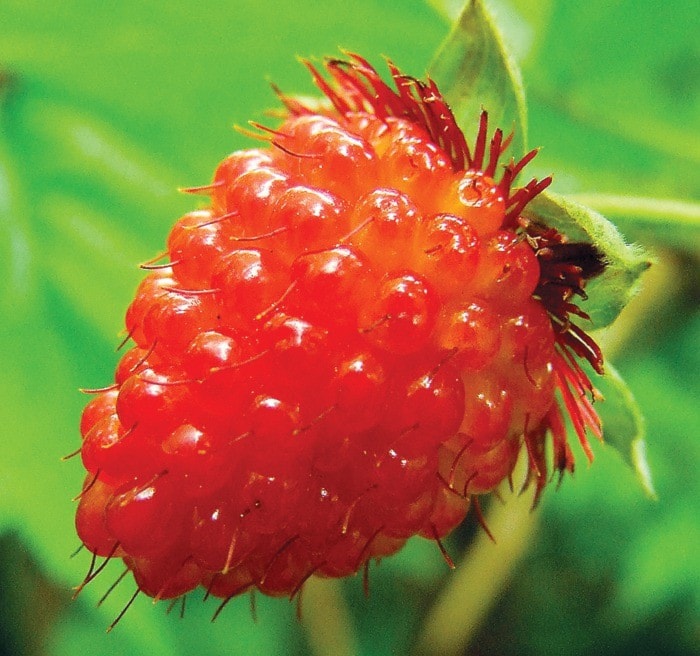Assemble the berry buckets and head for the woods; salmonberry season is in full swing, and while it may seem silly to name a berry for a fish, it’s the refreshing taste that makes them worth picking.
The native shrub’s odd vernacular name originated along the Columbia River, where aboriginal peoples ate the tender reddish shoots with dried salmon-roe. They also noticed that salmon eggs were similar in appearance to the tiny clustered globes on this fruit, which just happens to be the same colour as salmon flesh.
Within the raspberry (Rubus) family, the magenta-petalled salmonberry (Rubus spectabilis) is truly spectacular, possessing the only colour in a genus of white blooms. The wild raspberry clan counts among its members thimbleberry, blackberry, bramble, dwarf nagoonberry and cloudberry.
Some consider the raspberry-like fruit to be edible but somewhat mushy, especially after rain, and the large juicy berries in yellow, honey-orange or red, often vary widely in taste and texture from one bush to another. Historically, Northwest Coast native groups ate some and dried the rest into fruit leather.
Today’s best advice seems to be: “Eat them fresh.” In recipes, salmonberries may be used like raspberries, but tend to be a bit watery. Add one cup-full of the fresh berries to any shortcake or biscuit recipe for a real wild treat.
Native peoples also ate the vitamin-rich young shoots emerging from the ground as a spring vegetable. Peeled or raw, the shoots taste sweet and juicy, and are delicious steamed with butter. Some groups held salmonberry sprout feasts, singing and dancing on the beach while the sprouts were steam-cooked in a pit.
As with every good member of the raspberry clan, salmonberry stems have some scattered prickles; unlike the vicious blackberry, however, salmonberry prickles will not tear the flesh off picking hands.
One of the most common plants along Vancouver Island trails, salmonberry can be absolutely abundant beside streams and riverbanks in the humid northwest.
E-mail nature photos or comments to: wildernesswest@shaw.ca.
Christine’s book: Nature Campbell River, describes the areas 37 nature trails. Available at the museum and Coho Books.
